Abstract
The soil fumigants methyl bromide, chloropircrin and Basamid or mixtures of Basamid and chloropicrin proved to be of no use in filling T. trichiura ova in soil. However, on untreated plots the eggs died at a rate such than only 20% of the ova remained viable after 18 months.
Full text
PDF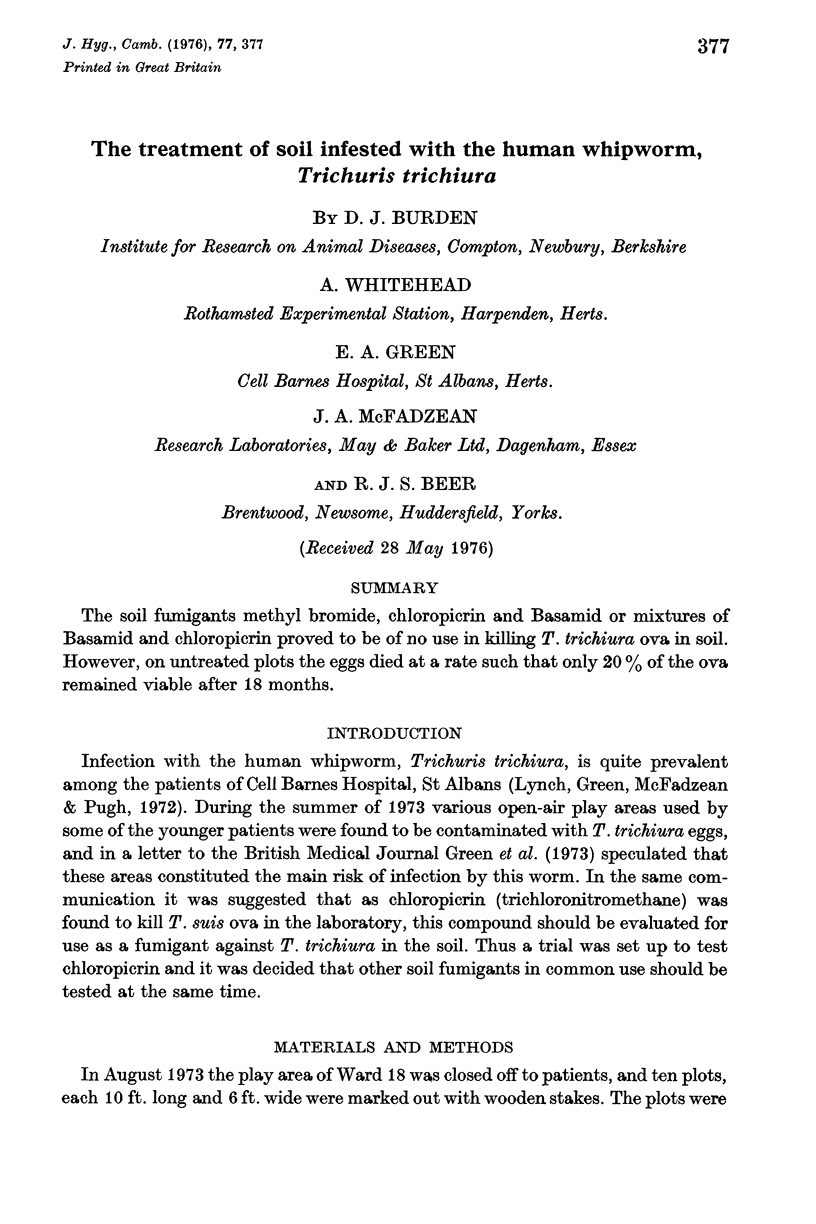
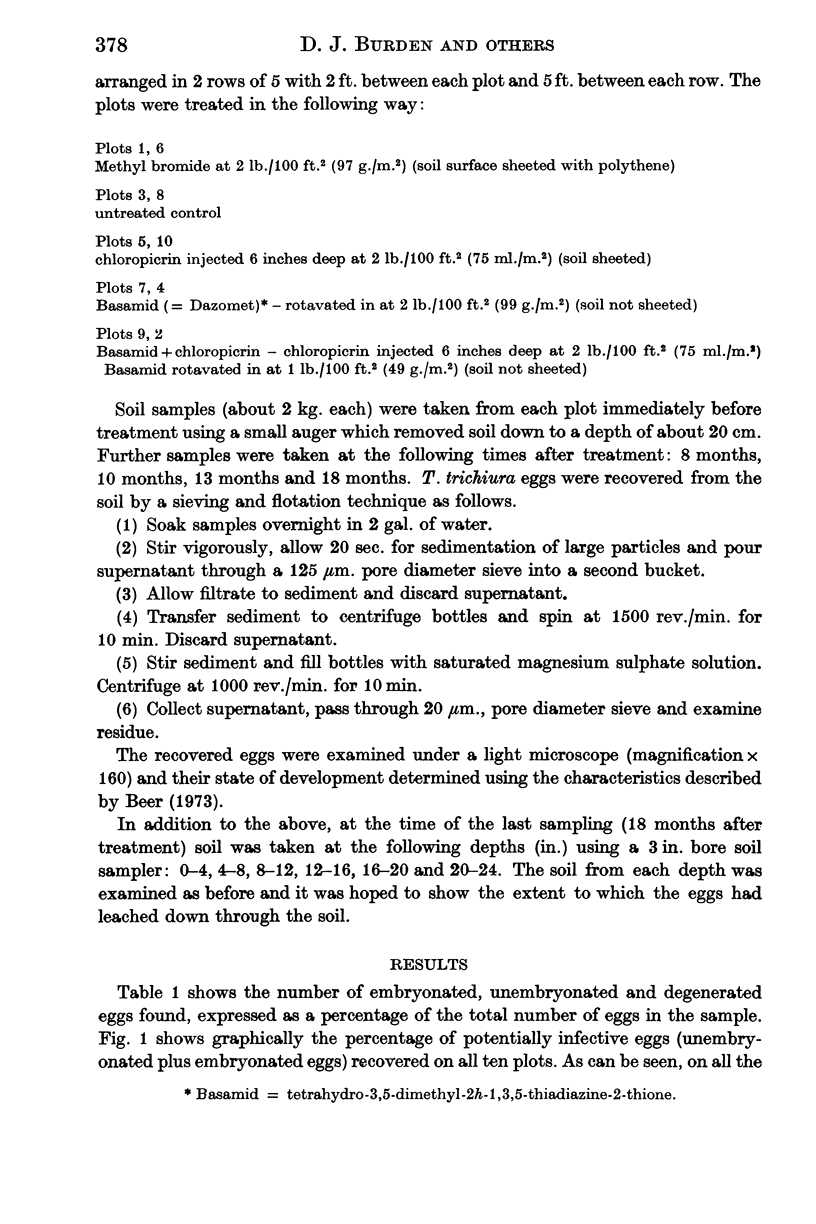
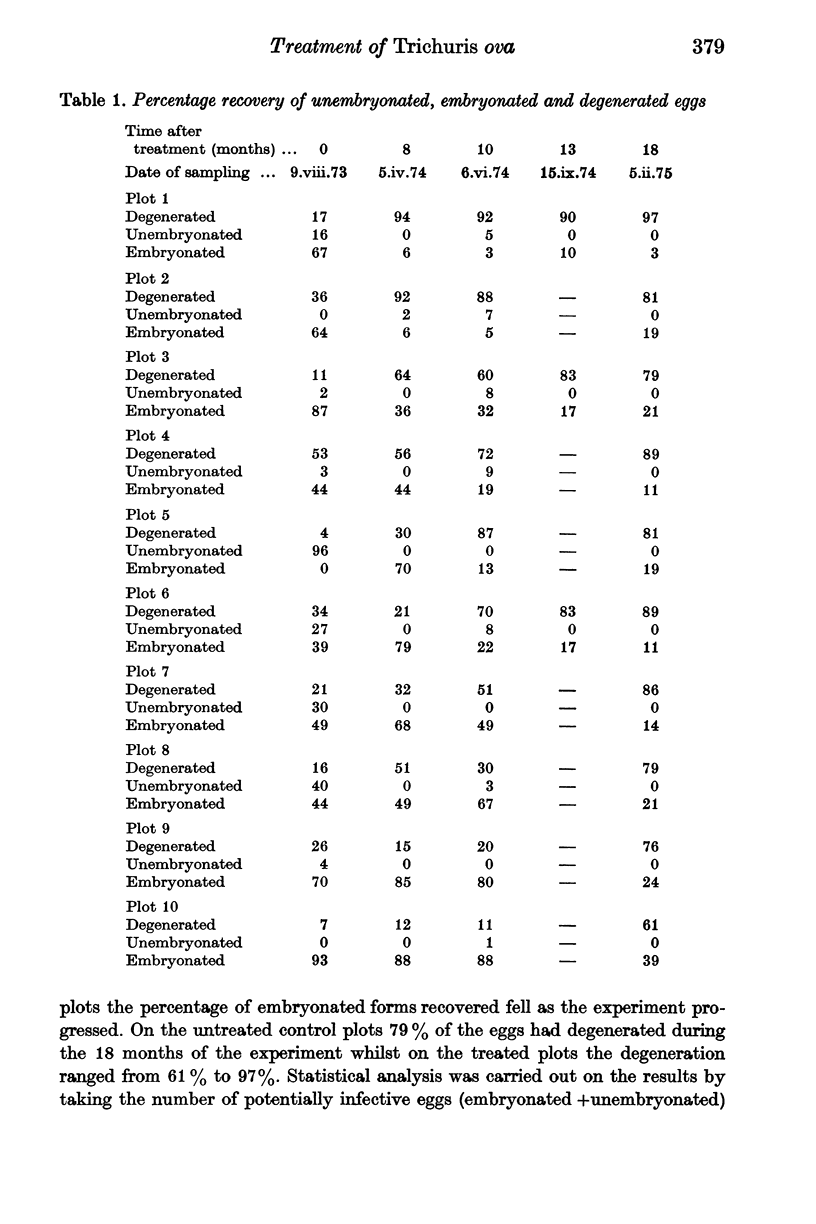
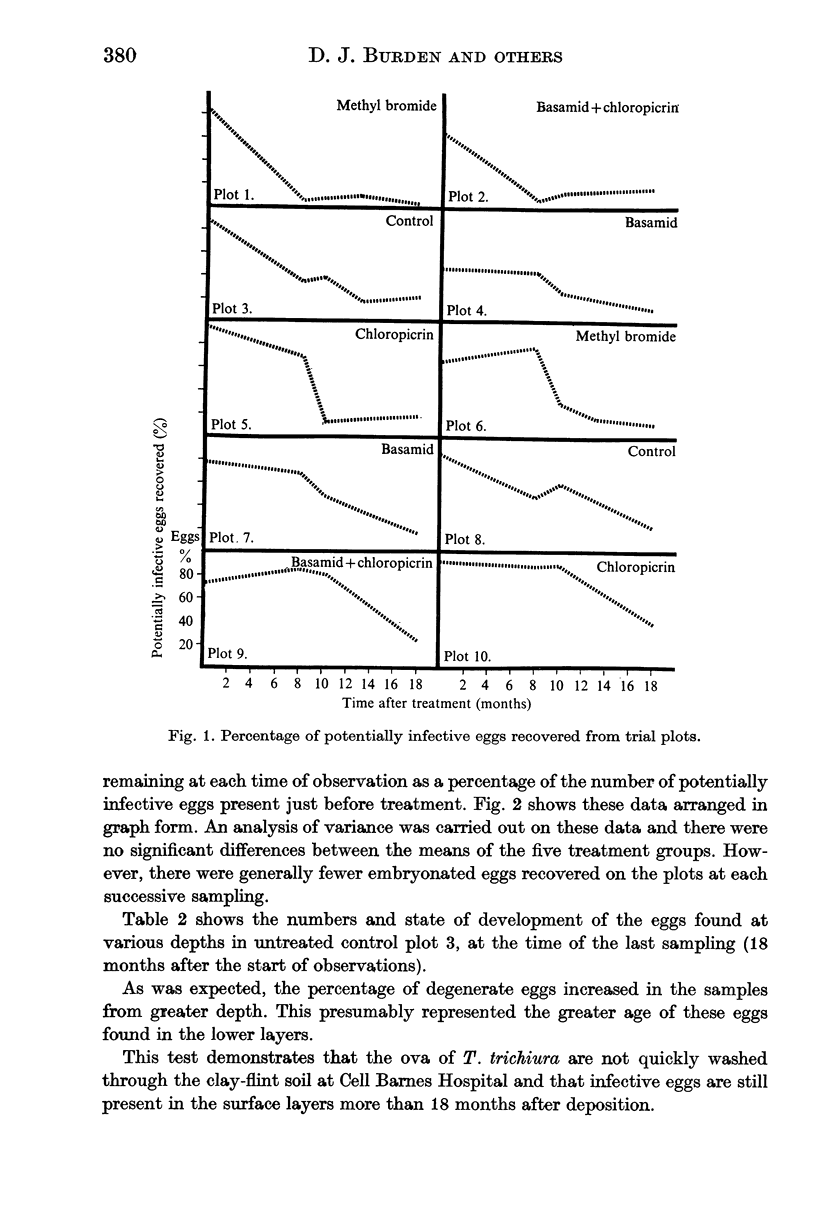
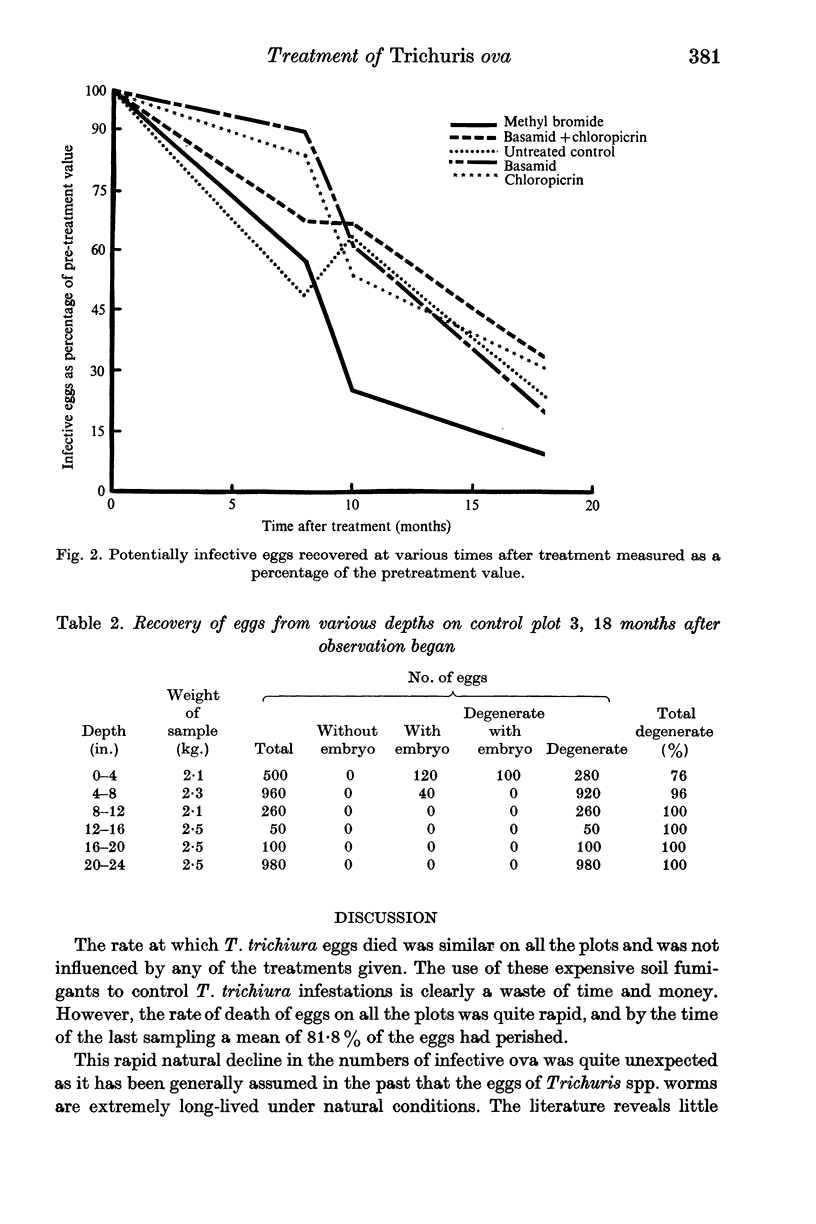
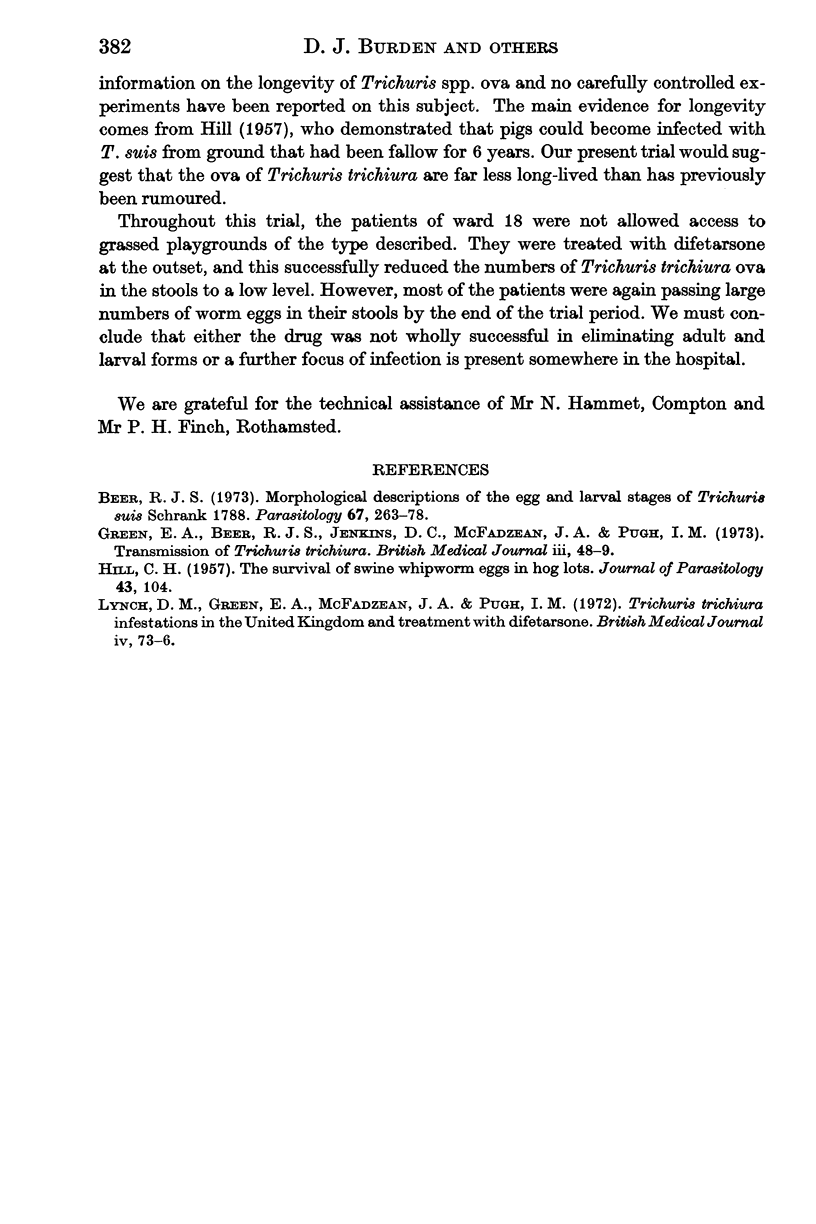
Selected References
These references are in PubMed. This may not be the complete list of references from this article.
- Beer R. J. Morphological descriptions of the egg and larval stages of Trichuris suis Schrank, 1788. Parasitology. 1973 Dec;67(3):263–278. doi: 10.1017/s0031182000046503. [DOI] [PubMed] [Google Scholar]
- Green E. A., Beer R. J., Jenkins D. C., McFadzean J. A., Pugh I. M. Transmission of Trichuris trichiura. Br Med J. 1973 Jul 7;3(5870):48–49. doi: 10.1136/bmj.3.5870.48-b. [DOI] [PMC free article] [PubMed] [Google Scholar]
- Lynch D. M., Green E. A., McFadzean J. A., Pugh I. M. Trichuris trichiura infestations in the United Kingdom and treatment with difetarsone. Br Med J. 1972 Oct 14;4(5832):73–76. doi: 10.1136/bmj.4.5832.73. [DOI] [PMC free article] [PubMed] [Google Scholar]


